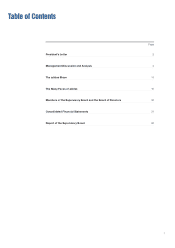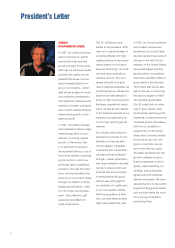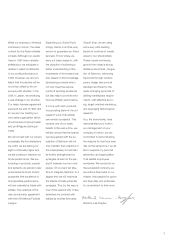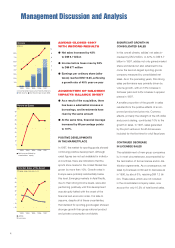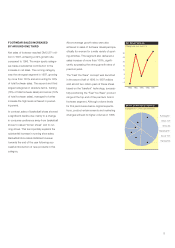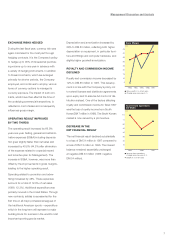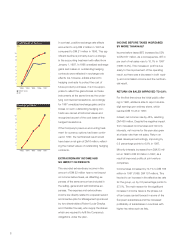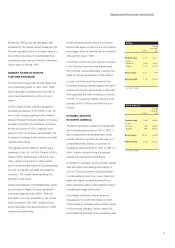Adidas 1997 Annual Report Download - page 13
Download and view the complete annual report
Please find page 13 of the 1997 Adidas annual report below. You can navigate through the pages in the report by either clicking on the pages listed below, or by using the keyword search tool below to find specific information within the annual report.
11
The formation of a wholly-owned subsidiary
in the People’s Republic of China and expan-
sion of adidas’ activities in Thailand at the
beginning of 1998 represent further opportu-
nities for the Company to exploit the existing
growth potential in this region.
BRAND IMAGE IMPROVED
IN LATIN AMERICA
Whereas major regions of Asia have been
shaken by economic and financial crises, the
business climate in Latin America is more
stable. adidas managed to increase
sales in
this
region by 55% to DM 169 million, thus
achiev
ing a significantly higher level of growth
compared to the preceding year (1996: 19%).
Virtually all subsidiaries in the region reported
double-digit growth, with the exception of
Brazil, where sales decreased by 2% due to
a generally poor retail environment.
Growth was strongest in apparel, with an in-
crease of 180%. However, apparel represents
only 12% of total net sales in Latin America.
Footwear sales grew by 51% to DM 136 million.
In 1997, the focus of adidas management was
on improving brand image and the quality of
adidas products sold in the region. In order
to accomplish this, the percentage of sales of
imported products was again increased –
from 25% of total regional sales in 1996 to
around 34% in 1997, with the remaining 66%
being produced locally under license. Addi-
tional resources were added to product mar-
keting to help ensure that the regional objec-
tives regarding product are met. Moreover,
adidas introduced a futures buying program
for key accounts in two major markets, which
should substantially reduce the risk related to
the product purchase side of the business.
Management Discussion and Analysis
1995 1996 1997
Inventories and Order Backlog
(DM m)
3,500
3,000
2,500
2,000
1,500
1,000
500
nInventories
nOrder backlog of major group companies
for the next first half year
Going forward into 1998, a predominant
focus of regional management will continue
to be on pursuing opportunities to take over
the distribution of adidas products wherever
feasible, in order to ensure full control over
the adidas brand.
SIGNIFICANT GROWTH
IN TOTAL ASSETS
As of December 31, 1997 total assets
amounted to DM 4.3 billion, representing
an increase of 75% year-over-year mainly
due to the acquisition of the Salomon family
holding.
INVENTORIES INCREASED AT A
SLOWER RATE THAN ORDER BACKLOG
Current assets, consisting of inventories,
receivables, cash and cash equivalents and
other current assets, reached DM 2,827 mil-
lion. This represents 66% of the total asset
base of adidas, an increase of 42% year-
over-year.
Inventories as of December 31, 1997 were
48% above the previous year’s level but grew
at a slower rate than order backlog for the
next six months of 1998, which increased by
56%. The most significant growth in invento-
ries was reported in countries that also have
the highest growth in order volume, such as
Spain.
Trade receivables and other current assets
as of December 31, 1997 amounted to
DM 1,158 million – compared to DM 818 mil-
lion as of December 31, 1996. The increase
in trade receivables of 37% is lower than the
fourth quarter sales growth.


